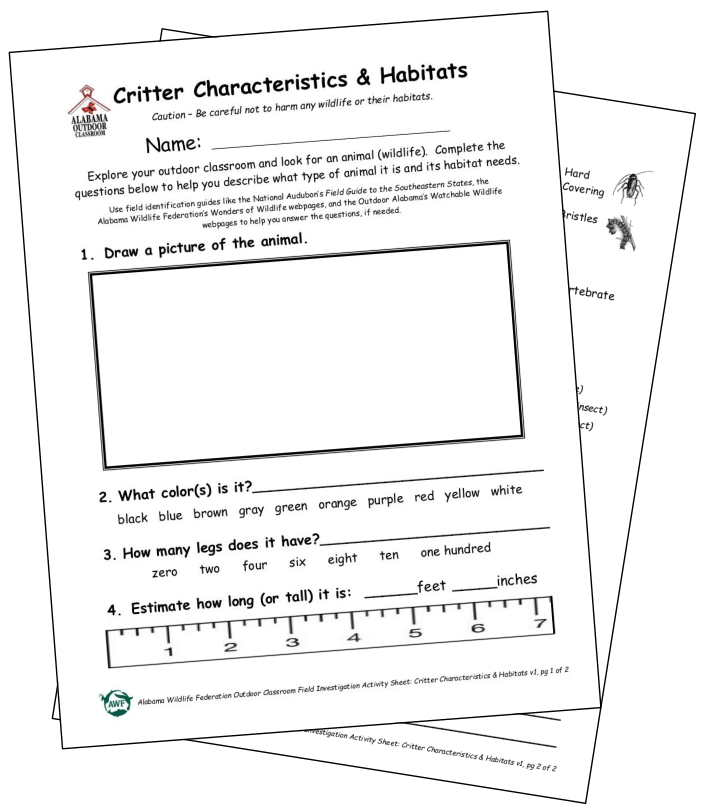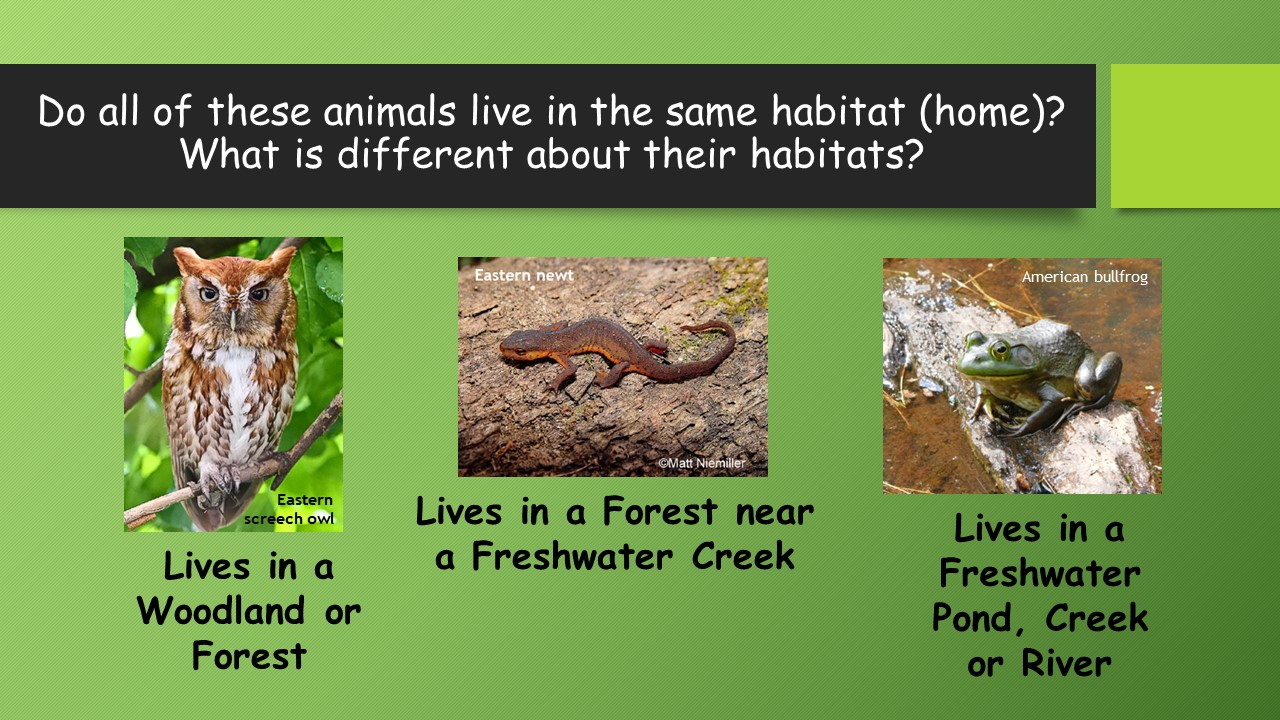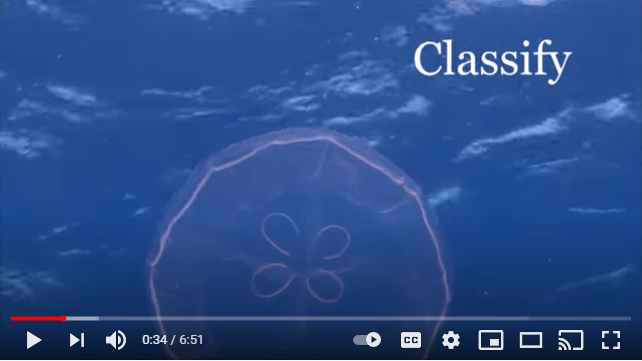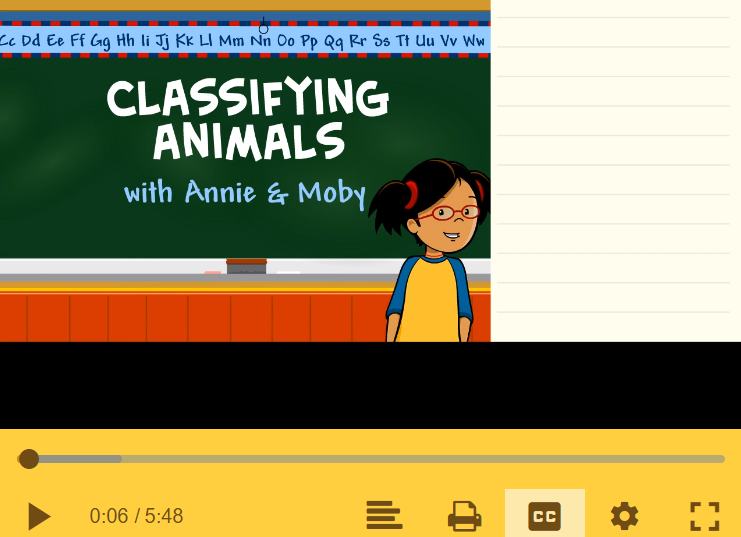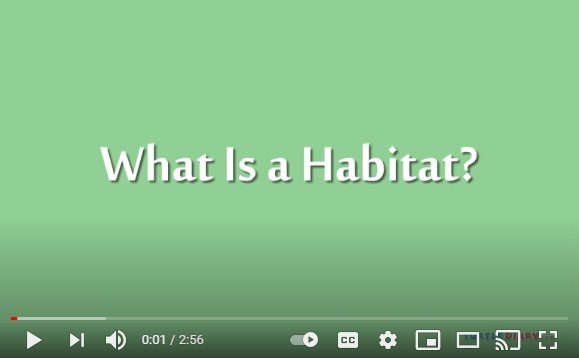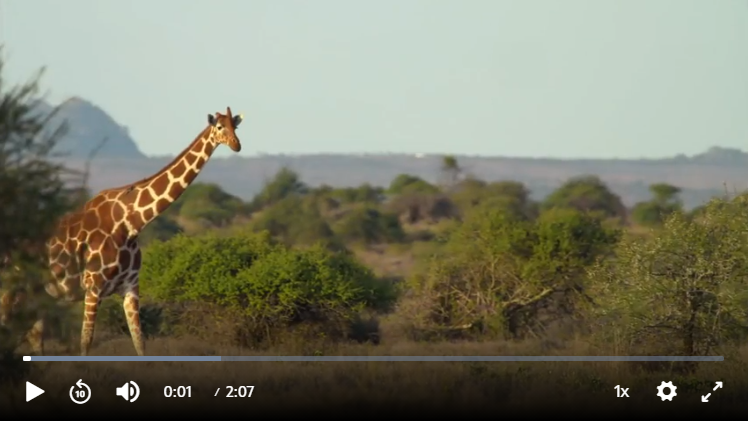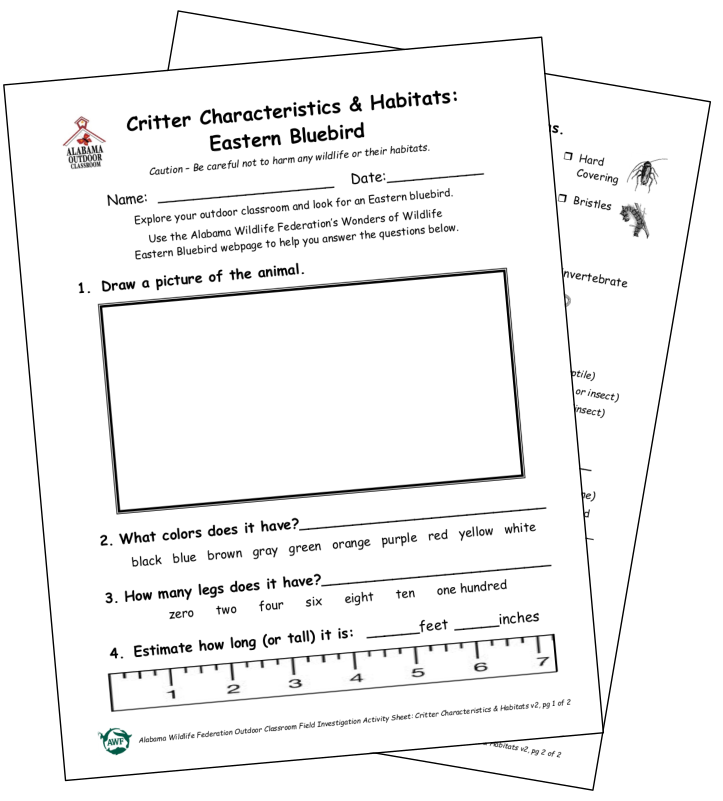Field Investigation: Critter Characteristics and Habitats
Students look for a bird, insect, amphibian, reptile or mammal in the outdoor classroom, record its features, and then describe its habitat. Afterwards, they discuss how and why different animals were found in different places in the outdoor classroom.
Questions? Contact us at oc@alabamawildlife.org. .
| Click on the orange links to access free educational materials: | |
| Lesson Plans | ALSDE Standards Taught | |
| Activity Page #1: An Animal & its Habitat Needs (or as Word Doc) | |
| Activity Page #2: Eastern Bluebird & its Habitat Needs (or as Word Doc) with Answer Page | |
| Outdoor Activity Materials: activity pages, clipboards, pencils, field identification guides such as the National Audubon Society Field Guide to the Southeastern States |
|
Step 1: Engage through Discussion
|
|
| Engage the students and capture their interests with an Interactive Q&A (or as PDF) that allows you to click through the questions one at a time. You can gauge your students' understanding of the topic as they answer the questions. Print and use the Q&A Info Sheet (or as Word Doc) to anticipate the next question in the Interactive Q&A and to guide the conversation with the students. (Note: For the PowerPoint (PPT), click "Slide Show" & "From Beginning" to display the questions and answers separately.) | |
Use these tools to continue the discussion:
|
|
|
Step 2: Explore with Literature
|
|||
| As you read these books, you can further explore the topic and discuss your students' experiences and knowledge around the topic: Animal Homes (Ranger Rick: Animal Fun for Young Children) by Jennifer Bove' (ISBN: 978-1630762247) One Small Square: Backyard by Donald M. Silver (ISBN: 978-0070579309) One Small Square: Woods by Donald M. Silver (ISBN: 978-0070579330) One Small Square: Swamp by Donald M. Silver (ISBN: 978-0070579262) One Small Square: Pond by Donald M. Silver (ISBN: 978-0070579323) Animal Habitats (My Science Library, Levels 1-2) by Julie K. Lundgren (ISBN: 978-1617419348) |
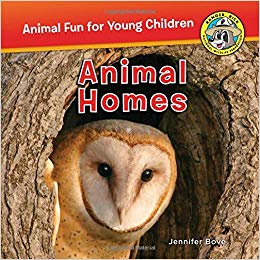 |
||
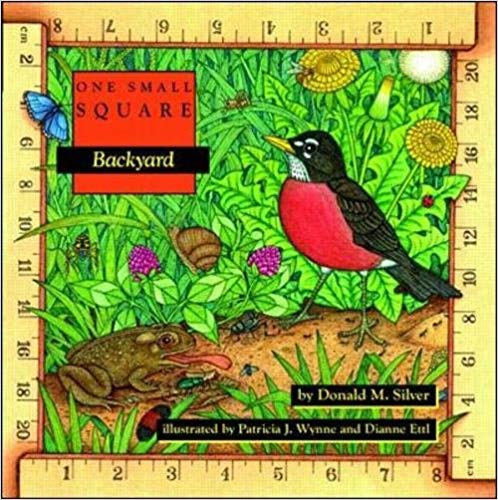 |
|||
| Step 3: Explain with an Educational Video | |
| Use these educational videos to help explain the topic in more detail: | |
| Animal Classification YouTube Video (6:51 min) @ https://www.youtube.com/watch?v=mRidGna-V4E |
Animal Classification Brain Pop Jr. Video (5:48 min) @ https://jr.brainpop.com/science/animals/classifyinganimals/ |
| What is a Habitat? Video (2:56 min) @ https://www.youtube.com/watch?v=CxrlEajA398 |
Nature: Animal Homes PBS Learning Media Video (2:07 min) @ https://www.pbslearningmedia.org/resource/ nat15.sci.lisci.anihome/habitat-animal-homes/#.W3R81ehKg2w |
Wildlife Identification Resources:
|
| Step 4: Elaborate with a Field Investigation in the Outdoor Classroom | |
| Students apply what they have learned as they investigate the topic in your outdoor classroom and record their real-world observations on their activity page: | |
| Version #1: An Animal & Its Habitat Needs |
Version #2: Eastern Bluebird & Its Habitat Needs |
Activity Tips
|
|
| Version #1 - An Animal & Its Habitat Needs: General Animal Activity Page: PDF (as is) / Word Doc (editable) Procedure Outdoor Discovery:
|
|
| Version #2 - An Animal & Its Habitat Needs: Eastern Bluebird Activity Page: PDF (as is) / Word Doc (editable) Procedure Outdoor Discovery:
|
|
Wildlife Identification Resources:
|
|
| Step 5: Evaluate with an Assessment Activity | ||
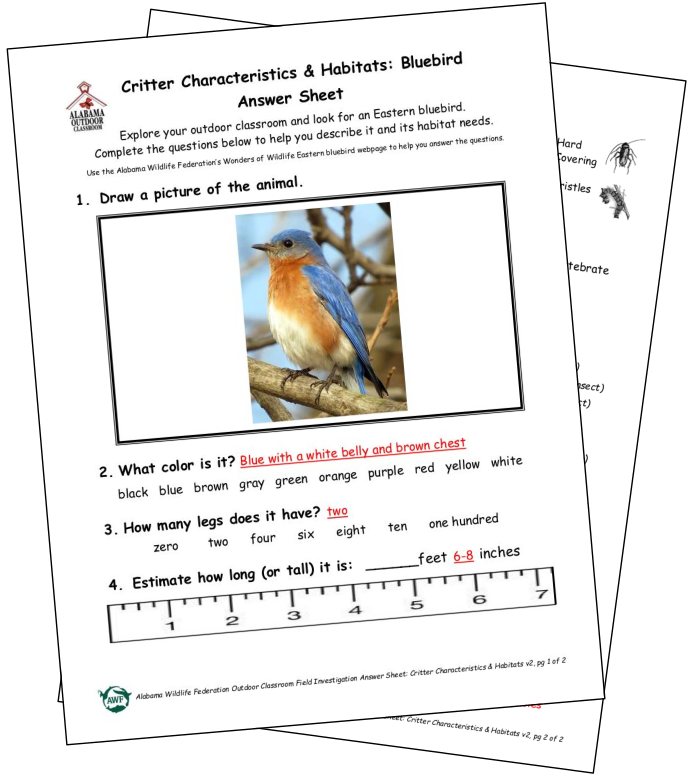 |
||
| Review and assess the students’ observations and answers on their observation pages:
Evaluate the students' understanding of the topic with the following assessment tools:
|
||
 Wildlife Tag
Wildlife Tag
